
Turku is a city and former capital on the southwest coast of Finland at the mouth of the Aura River, in the region of Finland Proper (Varsinais-Suomi) and the former Turku and Pori Province. The region was originally called Suomi (Finland), which later became the name for the whole country. As of 31 March 2021, the population of Turku was 194,244 making it the sixth largest city in Finland after Helsinki, Espoo, Tampere, Vantaa and Oulu. There were 281,108 inhabitants living in the Turku Central Locality, ranking it as the third largest urban area in Finland after the Capital Region area and Tampere Central Locality. The city is officially bilingual as 5.2 percent of its population identify Swedish as a mother-tongue.

The Royal Academy of Turku or the Royal Academy of Åbo was the first university in Finland, and the only Finnish university that was founded when the country still was a part of Sweden. It was founded in 1640. In 1809, after Finland became a Grand Duchy under the suzerainty of the Russian czar, it was renamed the Imperial Academy of Turku. In 1828, after the Great Fire of Turku, the institution was moved to Helsinki, in line with the relocation of the Grand Duchy's capital. It was finally renamed the University of Helsinki when Finland became a sovereign nation-state in 1917.

The University of Turku, located in Turku in southwestern Finland, is the third largest university in the country as measured by student enrollment, after the University of Helsinki and Tampere University. It was established in 1920 and also has facilities at Rauma, Pori, Kevo and Seili. The university is a member of the Coimbra Group.
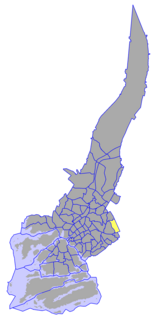
Varissuo is a district and the largest suburb of the city of Turku, in Finland. It is located seven kilometres to the east of the city centre, and is the easternmost major suburb of Turku, bordering on the neighbouring city of Kaarina. Varissuo has 9,000 inhabitants, the majority of whom are foreign immigrants. It is thus the second largest district of Turku, after Runosmäki. The name consists of the words varis, meaning 'crow' and suo, meaning 'marsh'.

Runosmäki is a district and a suburb of the city of Turku, Finland, located approximately six kilometres to the north of the city centre. It is the largest district in the city, with a population of 10,296. However, the area of the district also includes the nearby suburb of Länsinummi in addition to Runosmäki proper, which has a population of about 8,200 and thus it is only the second-largest suburb of Turku, after Varissuo.
Turku International School is an international school in Turku, Finland, located in the eastern district of Varissuo. It was established in August 2003, and is maintained by the City of Turku. Notably it doesn't have its own faculty, but teaching is undertaken by the University's teacher training school. The official language of the school is English. Around half the 200 students are of foreign nationality.

The II District is one of the central districts of Turku, Finland. It is located on the east side of the river Aura, between Uudenmaankatu and Kaskenkatu. The district is located on the historical centre of the city, and contains numerous cultural and historical venues, such as the Luostarinmäki handicrafts museum, the Aboa Vetus & Ars Nova twin museums, and the Old Great Square, the city's oldest marketplace. It also hosts events such as the Medieval Market of Turku. A large portion of the district's land area is also taken up by the Vartiovuori park.
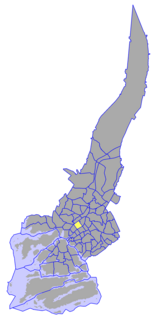
The VII District is one of the central districts of Turku, Finland. It is located on the west side of the river Aura, between Aurakatu and Puistokatu. Like the neighbouring VI District, it forms part of the city's central business district. The two districts combined host a large proportion of the city's business life, particularly around the Market Square. Turku City Hall is located in the VII District, as well as the Turku Central Railway Station.

The Great Fire of Turku was a conflagration in the city of Turku in 1827. It is still the largest urban fire in the history of Finland and the Nordic countries.

Vartiovuori Observatory is a former observatory in Turku, Finland. The observatory, designed by Carl Ludvig Engel, was originally built for the Royal Academy of Turku. The neoclassical building was completed in 1819. The observatory is situated atop the Vartiovuori hill, and it is clearly visible from different sides of the city centre.

Turku City Library is a municipal public library in Turku. The Main Library is located in the VI District at the city centre. The Turku City Library also operates several branch libraries and two mobile libraries. It is part of the Vaski library network, which is a consolidation of 18 public libraries in the Finland Proper region.

The Turku tramway network was the first—and until the 2021 opening of Tampere Light Rail, second to last—tram system to be operated in Finland. It was operated as horse tramway from 1890 until 1892, and as an electrified tramway from 1908 until 1972. Prior to 1919 the tram system was owned by private interests, and from that year onwards by the City of Turku until closure of the system.

Turku Cemetery is a cemetery inaugurated in 1807 and located in Vasaramäki on the south-eastern outskirts of the city of Turku.
Turku Coastal Regiment was a Finnish coastal artillery unit operating in the Turku area and Archipelago Sea. It was formed on 10.9.1939 as Turku Sector as part of the neutrality guard and later Winter War coastal sector system from a peace time 1st Independent Coastal Artillery Battalion. Turku Coastal Regiment was disbanded as an independent unit on 30.6.1998 and became part of the newly formed Archipelago Sea Naval Command as Turku Coastal Artillery Battalion.

The Old Great Square is a medieval market square located in the city centre of Turku, Finland. It is located in the II District in very close proximity to Turku Cathedral. The area was the administrative and commercial centre of Turku since the founding of the city in the 13th century up until the Great Fire of Turku.
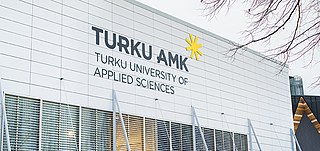
Turku University of Applied Sciences is a multidisciplinary higher education institution, located in the city of Turku and Salo in the Southwest Finland. The institute began operations as a temporary polytechnic in autumn 1992. Before 2006-01-10, the institution carried the English name of Turku Polytechnic.
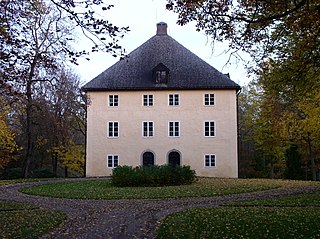
Kankainen Manor is a late medieval manor in Masku, Finland, located along a small river about one kilometre south of Masku town centre. Kankainen Manor is considered to be the oldest surviving residential building in Finland, as its oldest parts may be from the end of the 15th century. In 2009, the Finnish Heritage Agency defined it as one of Finland's nationally significant built cultural environments.

The Sibelius Museum is a museum of music, named after the Finnish composer Jean Sibelius. The museum is located close to Turku Cathedral in the historical city centre of Turku on the southwest coast of Finland. It is the only museum devoted to music in Finland. The museum houses a wide collection of historical music instruments from around the world. The archives of the museum include documents The museum was first founded during the 1920s as a seminar for the Department of Musicology at Åbo Akademi University, and has later developed into its own department. The Museum is currently organised and funded by the Åbo Akademi Foundation. The current building was built and opened in 1968 and it was designed by architect Woldemar Baeckman.
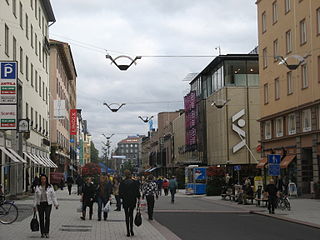
Yliopistonkatu is a 1,5-kilometer-long street located in the city center of Turku, Finland, running parallel to the Aura River, starting at Kutomonkatu and ending at Koulukatu. Since 2001, the part of Yliopistonkatu between Aurakatu and Humalistonkatu, which is about four hundred meters long, has been a pedestrian street. The area of the current pedestrian street has been Turku's Christmas street since 1948. The Turku Market Square is also located along Yliopistonkatu.

















